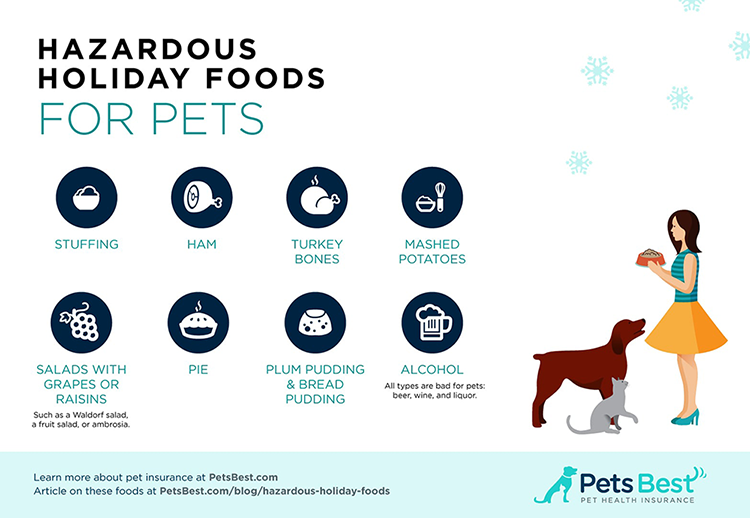Find consumer tips on everything from credit to home safety to travelling on a budget and so much more!
Real Christmas Trees: How to Prevent Fires
Fresh pine trees just add something to the season. But they can be fire hazards, so it’s important to take some precautions.
If live Christmas trees are your go-to, help keep your home fire-safe with these simple tips:
Measure Your Christmas Tree Stand so you Know how Large a Tree it can Handle
Freshness is key. A dry tree is more susceptible to catch fire. The best way to get the freshest tree is to cut it yourself. If that’s not an option, purchase one from a tree lot that sources trees.
Bounce the tree to test freshness. If a lot of needles fall, it’s likely too dry.
You also can crush a few needles in your hand — fresher trees have a strong pine scent.
Keep Your Tree Safe at Home
Trim a half inch off the tree’s trunk for the best water absorption, and water it as soon as possible.
Water your tree meticulously, especially in the first two days, when it can take almost a gallon of water daily.
Keep your tree at least 3 feet away from any heat sources, which cause one in six Christmas tree-related fires, according to the National Fire Protection Association.
Remember Decorating Safety
Never use candles on or near your Christmas tree.
Inspect your lights before hanging them, and don’t connect more than three strings together.Turn Christmas tree lights off before you leave the house or go to sleep.
Know When to Say Goodbye
The drier the tree, the greater the fire hazard. Dispose of your tree no later than a month after Christmas. You’ll also spare yourself mounds of needles if you dispose of your tree shortly after the holiday.
These fire prevention tips were brought by Union Plus Homeowners Insurance with MetLife Auto & Home®.
Save hundreds of dollars with competitive rates and special discounts just by being a union member. Call 855-666-5797 and mention Union Plus discount code DJ7.

MetLife Auto & Home is a brand of Metropolitan Property and Casualty Insurance Company and its affiliates: Economy Preferred Insurance Company, Metropolitan Casualty Insurance Company, Metropolitan Direct Property and Casualty Insurance Company, Metropolitan General Insurance Company, Metropolitan Group Property and Casualty Insurance Company and Metropolitan Lloyds Insurance Company of Texas, all with administrative home offices in Warwick,RI. Coverage, rates and discounts and policy features vary by state and product, and are available in most states to those who qualify. Met P&C®, MetCasSM and MetGenSM are licensed in the state of MN.
© 2017 MetLife Auto & Home L0417493849[exp1018][All States][DC]

Have a safe holiday season with these fire prevention tips for real Christmas trees!
Union Plus Acts as Financial Partner to Union Families
When my uncle’s union went on strike in the early 1980s, members of other organizations rallied around him and his co-workers until they went back to work. Christmas still happened. No meals were missed. The union kept all of the electricians comfortable during a very uncomfortable time.
It’s that sort of protection and camaraderie that draws people to employee unions in the first place. In fact, 14.6 million Americans were part of a union in 2016. After all, you can never have too much insurance in case of injury, disability, strike, or loss of employment.
That’s the thinking that has made Union Plus benefits a mainstay in the lives of more than 12 million members nationwide. Created by the AFL-CIO in 1986, the nonprofit Union Privilege supports the labor movement with financial and lifestyle products (called Union Plus benefits) designed for union members and their families. Among the original, and most popular, offerings are a trio of Mastercard-branded credit cards issued by Capital One that meet a host of needs.
Whether you’re looking to rebuild credit or earn cash back on purchases, there are ways to get even more from a Union Plus Credit Card. And since Union Plus has been involved with the labor movement so long, it has learned the needs of union members change over time.
That same knowledge was used when developing a package of hardship benefits that offer grants to meet many needs, all at no extra cost.
“The goal was to create non-employment-based benefits that enhance the experience of being a union member,” said Roger Pollack, Head of the Union Plus Credit Program. “The credit card program was one of the first products established. Most of our employees have worked with the labor movement in some capacity before moving over to Union Plus. We’re proud of our work every day, to be able to work with and serve the millions of people who are lucky enough to have the union on their side.”
Current and retired union members are automatically eligible to apply for and use their union’s Union Plus benefits — no membership in Union Plus is required. Benefits range from discounts on entertainment options, like theme parks and movie tickets, all the way up to price breaks on monthly bills, like insurances and cell phone plans through AT&T, the country’s only unionized mobile carrier.
Hardship Grants Provide Relief During Strikes or Disability
Strikes happen — as do medical issues, job loss, and other types of financial hardship. While nobody wants these things to happen, they are a part of life and a key reason why millions of Americans join unions. To help keep your life intact when things get tough, Union Plus curated a package of benefits that includes single-use grants for financial assistance when you need it most.
“We have a special cardholder assistance program that offers the opportunity to apply for small- to medium-sized grants,” Roger said. “These help if you were to lose your job, become disabled, or if you were to incur a hospital or medical bill that you don’t have any coverage for. That’s just one of the special benefits designed for union members.”
The grants for eligible credit cardholders include a $300 strike grant, a similar job loss grant, or as much as $1,200 in hospital grant money.
“Those grants are paid directly to the cardholder,” Roger said. “They come from a trust that we established as a reserve to cover the grant program. If one of our cardholders is in trouble, we help out in a very direct way.”
Get the Credit You Deserve with the Benefits You Require
Union Plus has more than one million credit cardholders spread throughout all 50 states. The three cards offered are similar to regular consumer offerings through Capital One, but with the added layer of union benefits not seen through other issuers.
Those benefits are part of the reason why 90% of surveyed cardholders said they’d recommend the cards to others.
“We have a lot of folks who have been in the program for a really long time,” Roger said. “They’re people who support their union and are proud to be union members. They’re proud to be able to show their union card. Plus, our service is strong. What tends to yield a high satisfaction score is when people call up, they get their problems resolved quickly. We work hard to do that every day and for all of our cardholders.”
The Union Plus credit cards come in three options, each serving very particular needs.
Build Your Credit Profile Via Responsible Use with the Primary Access Card
The first tier of Union Plus’ credit card offerings is the Primary Access Card. This card has credit limits between $300 and $3,500, and a 24.24% variable APR. Credit limits may increase after making your first five payments on time, and the card does not come with an annual fee.
This card, along with the benefits and hardship grants that all of the cards carry, is a great starter for building — or rebuilding — credit over time.
Eliminate Balances with the Help of the Rate Advantage Card
If you have a balance on another credit card with a higher-than-average APR, Rate Advantage might be the card you need to eliminate that debt without overpaying on interest. Starting with a 0% APR for the first 15 months on all purchases and transfers, this card is ideal for anyone that wants to carry, or will likely build, a balance that can’t be paid off immediately.
Based on creditworthiness, a variable 11.9%-to-21.9% APR follows the introductory period. Credit limits range between $500 and $7,500, and the card comes with no annual fee.
“This card is definitely for people who are likely to be revolvers,” Roger said. “The idea is to have a competitively priced card, in terms of retail APR, that allows our cardholders to save on interest by transferring higher-rate balances and to use their money on things that are important to them.”
Earn 1.5% Cashback on Every Purchase with No Annual Fee
With a 0% intro APR for 12 months on all purchases and transfers, and rates of either 13.9%, 19.9%, or 23.74% afterward, depending on creditworthiness, the Union Plus Cash Rewards Card is packed with the perks most people look for in a go-to rewards card. The Cash Rewards Card earns an unlimited 1.5% in cash back on every purchase with no annual fee, and credit limits that extend as high as $10,000.
If you’re a regular credit user who doesn’t often keep a revolving balance, this card allows you to accrue rewards for purchases you’d already be making. You can let that money accumulate over time to put toward a larger purchase, use it toward lowering your balance, or as a bonus to treat yourself on a rainy day. The possibilities are whatever you want them to be.
Make Your Union Plus Credit Card Work for You
No one ever wants to think about the worst-case scenario, but smart workers always make sure they’re protected — just in case. Be it through a union membership or as part of the Union Plus benefits program, you can never have too much protection.
With the trio of credit card offerings from Union Plus, you may have access to the credit you need while adding the hardship benefits and discount packages at no extra cost.
If you or a loved one are a member or retired member of a union, the advantages of Union Plus extend beyond credit cards into all sectors of your financial well-being.
“We have a wide array of products,” Roger said. “Credit cards are one of our oldest and strongest, but we’ve always had a really good mortgage program and a strong discount benefits program with AT&T. We also have a new program where we’re partnering with eHealth to help members figure out what the best Medicare products are. We’re continuing to innovate in areas like that to meet the needs of union members.”

Editorial Note: Opinions expressed here are the author's alone, not those of any bank, credit card issuer, airline or hotel chain, and have not been reviewed, approved or otherwise endorsed by any of these entities.
Article originally published on cardrates.com.
During my youth in Chicago, it seemed as though everyone knew someone in a union, whether it was a family member, friend, or neighbor. Membership was — and still is — a great source of pride in my family, and for countless others across America.
How to Prevent Cavities
It may seem strange to suddenly be having these problems again, but in fact it is very common for you to experience cavities again as you get older. They don’t just affect children! Children and seniors are the two highest at-risk groups for tooth decay.
One common cause of cavities for older Americans is dry mouth, which is often a side-effect of medications for blood pressure, cholesterol, allergies and more. So how can you prevent this?
First, you should speak with your dentist about any medications you are taking and get their input. Here are some other tips for keeping your teeth healthy:
- Keep your diet low in sugar
- Drink more water
- Add more calcium to your diet
- Make sure you’re getting enough fluoride – try using fluoride toothpastes or mouth rinses
With these tips and regular cleanings, you can keep your teeth healthy. Scheduling regular cleanings (2 each year are recommended) can help your dentist catch and treat the early stages of cavities or other issues before it becomes more serious.


Are you suddenly getting cavities after years of being cavity-free?
Holiday Shopping Tips from the FTC
- Make a list and a budget. Include incidentals, like cards, wrapping paper and eating out.
- Check out websites that compare prices for items sold online, and at stores in your area.
- Look for rebates. Some can be redeemed at checkout, but most require you to send documentation to the manufacturer to get your rebate.
- Make sure the scanned price is right. Overcharges cost you money and time, especially if you don’t notice them right away.
- Consider customer reviews carefully. The law says reviewers should disclose their connection to a company, but not all of them do. Before you buy anything based on a review, search online for information from sources you trust. Compare reviews from a variety of websites.
- Giving jewelry? Take some time to learn the terms used in the industry so you can get the best quality and value.
- If you use a mobile device or computer to shop for deals, be aware that some unexpected emails, texts or posts may lead to fraudulent sites claiming bargains on brand name products.
- Save receipts. When you’re shopping online, keep copies of your order number, the refund and return policies, shipping costs and warranties.
- Billed for merchandise that wasn’t received? Here’s what to do.
- If money’s tight, consider layaway. You typically make a deposit and pay over time; the retailer holds the merchandise until you’ve paid for the item in full.

Originally posted by the Federal Trade Commission. All rights reserved.
Calling all shoppers: The holidays are just around the corner. And whether you like to meander through the mall or search for deals online, the FTC has a gift for you — shopping tips to help you watch your wallet, shop wisely, and protect your personal information.
Know What Lies Beneath Product Promises and Offers
For instance, a group operating as Tarr, Inc. settled FTC allegations that it ran a deceptive internet marketing campaign to sell weight-loss, muscle-building and wrinkle-reducing products. The FTC says Tarr used phony news stories and magazine reports, phony celebrity endorsements and customer testimonials, false claims, and sham “free trials” to sell the products. People agreed to pay the shipping costs for the trials, but Tarr allegedly didn’t make it clear that it would charge consumers for the trials and automatically enroll them in a subscription program unless they cancelled within a couple of weeks. In all, consumers paid about $180 million over five years for products that the FTC claims Tarr sold through deceptive marketing.
Avoid getting scammed by deceptive product offers:
- Read the fine print for a “low cost” or “free” trial offer. Look for terms such as enrollment in an ongoing subscription. This often means automatic debits or charges to your accounts. If you don’t understand the terms of the offer, don't sign up.
- Watch for pre-checked boxes, which the company may claim gives it permission to keep billing you after the trial. Be sure to set a reminder of when the free trial period is over to avoid getting billed if you no longer want the product.
- Learn how to spot phony news sites. These actually are elaborate ads created by marketers to look like news sites.
- Be skeptical about products that promise miraculous results. And just because a celebrity or a believable-looking “customer” appears to be praising the product doesn’t mean it’s trustworthy.
Tell the FTC if you experience a deceptive product offer.

Originally posted by the Federal Trade Commission. All rights reserved.
Searching online for products to enhance your looks or health will yield tons of results — especially ads. As you look through those results, pay close attention to the product claims and sales offers. Some marketers mislead people about what their product does, who uses it, and how much it’ll cost you.
Three Ways Your Union Plus Credit Card Works Hard for You
As a hardworking union member, you have a lot to keep track of. You stay on top of your responsibilities at work. You take care of your family at home. The last thing you need is another item on your to-do list. That’s why your Union Plus Credit Card now works even harder for you. With new features that make managing your account easier and more secure than before, you’ll have more time to focus on what matters most.
- Manage your account on the go with the Capital One Mobile app.
All it takes to check on your Union Plus Credit Card is a few quick taps. The highly rated* Capital One Mobile app makes viewing your account balance, recent transactions and even making payments simple. No matter how tech savvy you are (or aren’t), this app will work with you, at your speed, to make account management even easier.
- Help protect your credit with CreditWise®.
CreditWise is an easy-to-use tool that has your back by helping you keep track of and protect your credit. Review your free TransUnion® credit report update every 7 days for signs of error, theft or fraud. If you see something suspicious, CreditWise will tell you what to do next. It’s easy to stay on top of your credit with automatic alerts that let you know when something changes on your TransUnion credit report.
- Keep an eye on your card with account notifications.
With your busy schedule, it’s hard to keep an eye on every purchase, so custom alerts can do the monitoring for you. You can set them up to send payment reminders, account balance and suspicious activity notifications. Plus, you choose how you want to be contacted—email, text, push notifications or all 3.
These are just a few of the helpful features you’ll have access to when you enroll in our new online experience for Union Plus Credit Cardholders. If you’re ready to get started, click below.
If you don’t yet have a Union Plus Credit Card, apply today to access exclusive union benefits and online features.

Subject to credit approval. Terms and conditions apply.
*App Store® and Google PlayTM ratings are accurate as of September 2017.
The score provided in the CreditWise tool is calculated using your credit report from TransUnion. We use the TransUnion VantageScore 3.0 model, which is one of many scoring models used by lenders. Chances are your CreditWise score won’t be exactly the same as the one your lender uses, but it will be an accurate measure of your credit health, which is what every lender will be checking in their own way. The availability of the CreditWise tool depends on our ability to obtain your credit history from TransUnion. Alerts and notifications are based on changes to your TransUnion credit report.
Capital One does not provide, endorse or guarantee any third-party product, service, information or recommendation listed above. The third parties listed are not affiliated with Capital One and are solely responsible for their products and services. All trademarks are the property of their respective owners.
The Union Plus Credit Cards are issued by Capital One, N.A. pursuant to a license from Mastercard International Incorporated. Mastercard is a registered trademark, and the circles design is a trademark of Mastercard International Incorporated. Union Plus is a registered trademark of Union Privilege.
Union Plus Credit Card
PO Box 30255
Salt Lake City, UT 84130-0255
© 2017 Capital One. Capital One is a federally registered service mark.
We’ve got your back. It’s the idea behind everything we do at Union Plus. And it’s why your Union Plus Credit Card account now has online features that make managing your account that much easier. Read about what’s new in the article below, sponsored by Capital One®.
What to Keep in the Trunk This Winter
For small vehicle repairs:
- Canned, compressed air with tire sealant
- Spare tire, vehicle jack and lug wrench
- Tarp to kneel on
- Portable battery charger and booster cables
- Basic tools: a set of socket and open-end wrenches, a multi-tip screwdriver, and pliers
- Empty gas can
- Shovel
- Chains, rope or tow strap
- Road salt, sand or cat litter to help with wheel traction
For signaling help:
- Cell phone and charger
- Emergency flares
- Brightly colored flag or help signs
- Reflective hazard triangles
- Whistle
For staying warm:
- Extra winter clothing: boots, hats, coats and mittens
- Blankets: wool or fleece maintain insulation even when wet
- Sleeping bags
- Chemical heat packs
- Waterproof matches and candles
- Fire extinguisher
For your health and safety:
- Small water bottles
- Nonperishable, high-energy foods: protein bars, raisins, nuts, etc.
- Flashlights with extra batteries
- Basic sanitation supplies: toilet paper, baby wipes, plastic bags, etc.
- Multi-tool pocket knife
- First-aid kit
- Extra prescription medications for serious conditions such as heart disease, diabetes, asthma and allergies
As you stock up, familiarize yourself with each item so you know how to use it. Also keep your safety kit up to date in your car throughout the season — especially before long trips. Make sure everything works, and replace broken or expired items.
These tips were brought to you by the Union Plus Auto and Home Insurance program. Drivers saved an average of $536 a year on their auto insurance when switching to MetLife Auto & Home® .
Take advantage of the Union Plus Auto and Home Insurance Program by calling 855-666-5797 today! REMEMBER to mention your discount code: DJ7.

L1016481659[exp0919][All States][DC]

Be prepared for any road emergency with these supplies.
Low temperatures and winter weather can create hazardous road conditions. Stay ready for whatever comes with this emergency kit:
How to Protect Yourself When Buying a Used Car in Seven Easy Steps
Perhaps even worse is buying a used car with hidden damage from an accident, flood, or other incident that might affect safety and performance. Shoppers don't want to pay thousands of dollars for someone else’s problems.
Consumer Reports' Auto and Finance experts have come up with these savvy tips to ensure that you're getting a good used car. Remember that when buying a new or used car from a dealership, you should carefully double-check the agreement and all the numbers.
-
Don't Skip the Test-Drive
Why you shouldn’t: This is where you first determine if the vehicle is worth your consideration.
What you should do: Note unusual squeaks and rattles, or any items that need to be repaired. A car that pulls to one side might be showing signs of previous damage. Paint overspray on the backs of body panels and doorjambs can signal body work from an accident. The smell of mildew or mold could indicate water damage, which you definitely want to avoid. CR chief mechanic John Ibbotson says to avoid vehicles with signs of deep water exposure. “Even if a vehicle looks acceptable, and may be working when you inspect it,” Ibbotson says, “water damage could lead to many electrical problems down the road.”
-
Check the Car's Title
Why you should: This will help you avoid surprises that could pop up when you go to register the car.
What you should do: First, make sure the seller has the actual title for the vehicle on hand. Examine the title document for signs that the vehicle has been wrecked, repurchased under a state lemon-law program, suffered flood damage, or had another problem. Many state title documents will have that information disclosed on them. Some state titles do not have that information; in those states, you should check the vehicle history report (see below). Verify that the odometer statement on the title agrees with the number in the car and that the vehicle doesn’t have any outstanding liens. If the dealer doesn’t have the title or won’t show it to you, consider a different car or different dealer.
-
Expect to Get a Free Vehicle History Report
Why you should: Savvy dealers and private sellers will pay for these reports—from CarFax or AutoCheck—as a way make their car stand out to shoppers. These reports often detail whether a vehicle has ever been in a crash, its maintenance records, and how many owners the vehicle has had.
What you should do: Even though the seller may give you the report, you should still verify the information with the service. Along with total-loss information, the reports might provide warnings about odometer tampering, non-total-loss collisions, and any outstanding recalls.
If the seller won’t spring for one, you should get your own. Shoppers will pay $35 for a single Carfax reports and $30 for an AutoCheck report. As an extra precaution, you can go to NICB.org to get a free VinCheck report from the National Insurance Crime Bureau, and visit CarsForSale.com to get a free NMVTIS (National Motor Vehicle Title Information System) report.
-
But Don’t Rely Solely on That Report
Why you shouldn’t: While helpful, vehicle history reports aren’t perfect. There are many reasons why they can miss accidents, flood damage, vehicle theft, and other events that can seriously affect a used car's value as well as your decision about whether to buy it.
What you should do: Remain vigilant. Among the reasons these reports might be missing information: The services rely on information from insurance companies and police departments. But the owner might not have reported an accident or other incident to an insurer or police if the vehicle didn't have collision coverage or if the owner decided to pay for repairs himself. In addition, damage to rental cars may never be reported because rental car companies often self-insure. Finally, after an incident occurs, it can take months for the event to show up on a history report. By that time, the vehicle may have been repaired and resold. So make sure you get your own inspection.
-
Get a Mechanic’s Inspection
Why you should: Even if the car looks super-clean and the seller promises it was driven gently, you should get an expert opinion on its roadworthiness.
What you should do: Have the vehicle inspected by a reliable mechanic. “If you can, have a mechanic experienced in auto bodywork and accident repair give the vehicle a detailed inspection,” says Ibbotson. The results of this inspection give you ammunition to negotiate a final price: Either you can get a lower price because you’re going to fix the problems, or you could offer to pay their price if they fix the problems. Of course, you could ask that the problems be fixed and continue to haggle over the price. If the seller won’t let you take the car for an inspection, it’s time to walk away from the deal.
-
Check for Recalls
Why you should: Check whether any safety recalls apply to the vehicle you are considering.
What you should do: First, visit NHTSA.gov/recalls to research any open recalls. You’ll need the vehicle's 17-digit vehicle identification number. Recall-related repairs are made for free, but the work must be done by a new-car dealer that sells that brand of vehicle. If you find any recalls for the VIN, ask the seller to provide receipts showing that the fixes have all been performed. Consumer Reports recommends that shoppers not buy any vehicle with an open recall. With any vehicle you buy, make sure all of the recalls have been completed before you take possession. -
Contact the Previous Owner
Why you should: Because you never know what you might find out.
What you should do: If you’re buying from a dealer, ask if you can get the name and contact information of the previous owner. Unless it’s a former rental or leased vehicle, you often can find the former owner’s name on the title, or you might get lucky and find it on a document in the glove box or somewhere else in car. Don’t believe a dealer that tells you federal law prohibits the dealership from revealing former owner information. In fact, some states—including Kentucky, Maine, and Massachusetts—require dealers to turn over former owner information if it’s reasonably available.
Copyright© 2006-2017 Consumers Union of U.S., Inc. No reproduction, in whole or part, without written permission.


It’s important to thoroughly check out any vehicle you intend to buy: Even a vehicle with a good reliability record can be a problem, if it hasn’t been properly maintained.
Four Steps to a Happy Thanksgiving That Fits Your Budget
Unfortunately, there’s a cost to this reverie, whether you’re serving as host or traveling across state lines to visit beloved relatives. With some major holiday spending on the horizon, it’s reasonable to wonder if you’re justified investing so much on Thanksgiving. If you’re concerned about the cost of your Turkey Day celebration, here are a few tips to ensure your happiness and your budget stay in alignment.
Understand Your Thanksgiving Priorities
What’s important to you when it comes to Thanksgiving? The day has different meanings for different people. Are there certain people you absolutely have to spend the day with? Is it all about the food? Do you not really care about anything other than playing touch football in the yard?
Try to step back from what you believe is “expected” from the day and canvass around to understand what you and your family actually care about. You may be surprised. If you’re spending money on things that don’t reflect your true priorities, then you may want to consider changing how you approach the holiday.
Evaluate Your Menu
Cooking an entire Thanksgiving feast can be costly, especially as many families create enormous, diverse Thanksgiving menus in the hopes of appeasing everyone. The truth of the matter, however, is that just because you’ve got one cousin who likes creamed pearl onions, doesn’t mean you have to make them.
Try not to get too wrapped up in tradition. Just because you’ve made something in the past, doesn’t mean you’re required to make it every year. It goes back to your priorities – is Thanksgiving not Thanksgiving without pickled beets? Maybe! That’s for you to decide.
Consider your food waste. Leftovers are great, but how much food goes to waste each year? It may be because you’re making too much food, or there may be certain items that simply aren’t all that popular and can be taken off the menu. Don’t be afraid to change things up from year to year, especially if your top Thanksgiving priority isn’t “Do everything the same every single year.”
Invest in a Plan
One of the best ways to reduce expenses and stress is to plan ahead. Know where you’re going, what you’re making, what you want, and how you plan on making it all happen. Planning your menu in advance allows you to scope out deals and stock up on necessary items before the last minute rush. Plotting out a plan of attack for all that cooking goes a long way towards making sure nothing is undercooked, overcooked, or just plain forgotten.
A good Thanksgiving plan also allows you to coordinate with guests and hosts alike to help share some of the burden and save a good deal of money in the process.
If You Want to Spend, Spend! Just Make Cuts Elsewhere
If Thanksgiving is your favorite holiday and you can’t bear the thought of cutting or reducing anything at all, then…don’t. It’s perfectly okay to spend however you like on Thanksgiving, especially if it’s a special time of year for you and your family. The only caveat is that if you’re spending money you don’t have set aside or budgeted out, you’ll need to make up for that elsewhere.
Ideally those adjustments should come sooner rather than later. Don’t put yourself into debt and say, “Well, I’ll worry about it next year.” If you’re allowing yourself to overspend on the holidays (and by “overspend” I mean spend money you haven’t already accounted for in your budget, putting yourself in debt) you need to have a plan in place to make up that difference. Even if that plan is nothing more complex than subtracting $20 off the top of every paycheck until you’re back to normal, you can’t break your budget without it.
The most important thing is living a healthy, happy life. Your money and your budget are just a means to that end. If happiness is a big bowl of creamed pearl onions, well, you’re an oddball, but that’s okay. Do what makes you happy. Just remember the parts that don’t make you so happy – like struggling to pay your bills, or not saving as much as you’d like – and do the necessary work to make sure the unhappy parts don’t spoil the good times.
Union Plus Credit Counseling
Union members can get a no-obligation money and credit assessment from certified, experienced consumer credit counselors though Union Plus Credit Counseling. Powered by the non-profit Money Management International (MMI), your free session will cover a complete financial review, assistance in budgeting, advice for working with creditors, and more.
Learn More

Thanksgiving is much more than just the last stop on the road to those glitzier year-end holidays. It’s an opportunity to slow down, connect with family and friends, and consume horrifying amounts of delicious foods.
Six Holiday Foods to Keep Away From Your Pets
Learn why the following six foods can be dangerous for dogs and cats.
-
Stuffing
Thanksgiving dressing is often made with onions, scallions or garlic. These ingredients, however, are extremely toxic to dogs and cats and can cause a life-threatening anemia (destruction of the red blood cells). It’s best to avoid feeding any amount of stuffing to pets.
-
Ham
Ham and other pork products can cause pancreatitis, upset stomach, vomiting and diarrhea. Pork tends to be high in fat as well, which can lead to obesity in pets. Even a small amount of ham can contribute a very large amount of calories in a small dog or cat.
-
Turkey Bones
Bones can cause severe indigestion in dogs and cats, potentially causing vomiting and obstructing the bowel. Bones may also splinter and cause damage to the inside of the stomach and intestines. In some cases, turkey bones may even puncture through the stomach and cause a potentially fatal abdominal infection.
-
Mashed Potatoes
While potatoes are safe for pets to eat, mashed potatoes usually contain butter and milk, which can cause diarrhea in lactose intolerant pets. Additionally, some recipes call for onion powder or garlic, which are very toxic to pets.
-
Salads with Grapes/Raisins
There are many salads served during the holidays that include grapes or raisins as an ingredient, from fruit salad, to waldorf salad, to ambrosia. However, grapes and raisins are very toxic and potentially deadly. Grapes can cause severe, irreversible and sometimes fatal kidney failure in dogs. Be sure to keep all dishes that include grapes and raisins away from pets.
-
Chocolate Desserts
While pumpkin pie is the most famous Thanksgiving dessert and canned pumpkin has pet health benefits, many people offer a variety of chocolate desserts at Thanksgiving and throughout the holidays. Chocolate is toxic to dogs and cats, yet dogs love the smell and taste of it. The darker the chocolate, the more toxic it is. Keep all chocolate desserts out of the reach of pets to prevent an emergency trip to the veterinarian.
If your pets ingest any of these foods this holiday season, be sure to call your veterinarian immediately. Unexpected veterinary visits can be expensive but that’s where pet insurance can help, by reimbursing on veterinary bills.
Have a happy and safe holiday season!
Learn more about the
Union Plus Pet Insurance Member Benefit,
powered by Pets Best

The holidays are almost here and that means an abundance of delicious food. However, many popular human dishes aren’t healthy for pets to consume. This is important to remember during holiday meals, when dogs and cats beg for table scraps and guests might fall for those cute faces.